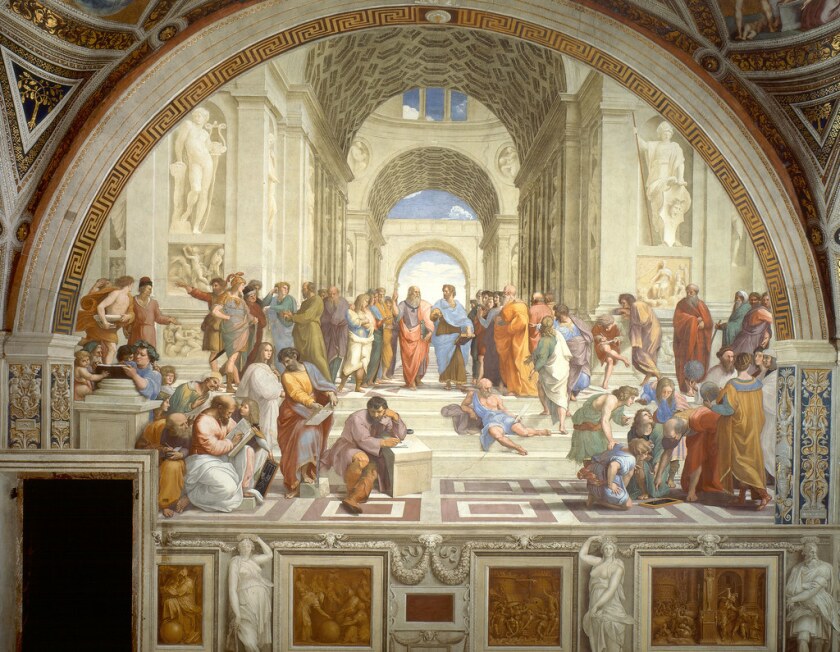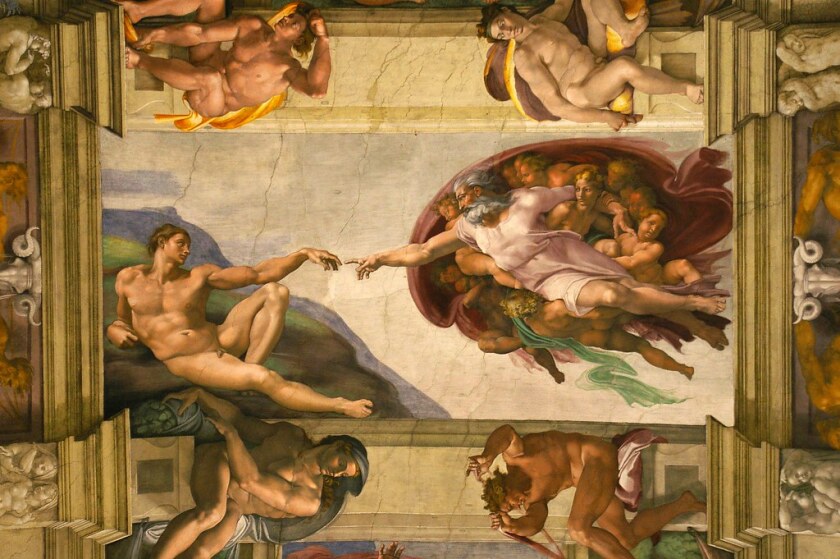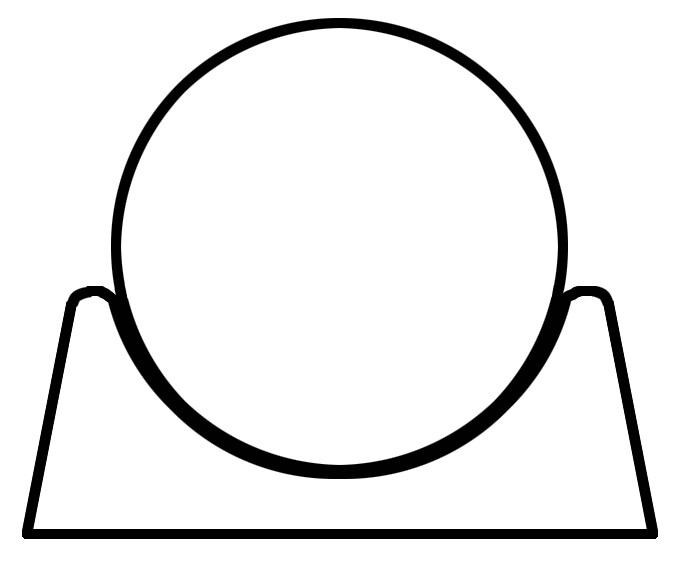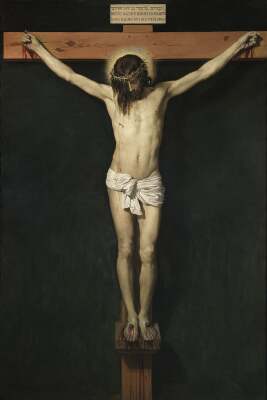LDSPMA presenters explain how layered geometry enhances our understanding of spiritual art.
Spiritual art is more than just a pretty picture. It enhances spiritual understanding and directs viewers’ gazes heavenward when they look beyond the obvious. Unfortunately, society tends to overlook the symbolism and only focus on the obvious, literal aspects. Local artist Joseph Brickey presented “Using Sacred Geometry in Art” at an October 2 LDSPMA conference, presenting insights on how to look past the obvious and recognize religious symbolism in art.
Brickey began by introducing an ancient hermetic teaching known as “as above, so below,” referring to the belief that things were created spiritually before they were created physically. “As above, so below” also implies a continuing relationship between spiritual and physical creations and ideas. Renaissance artists were keenly aware of this principle and implemented it in their works.
The Golden Ratio

One of the most common forms of geometric symbolism in religious art is the golden ratio. Initially beginning as a mathematic concept, the golden ratio of 1:0.62 divides lines in an aesthetically pleasing way. In art, the golden ratio refers to a midpoint when a segment is divided, creating beauty, balance, and harmony in the artwork. When used in religious art, the golden ratio implies a sacred nature of perfection and completeness.
The first painting Brickey introduced carried unexpected religious undertones and a hidden use of the golden ratio: Raphael’s School of Athens. The painting highlights classical philosophers with a wealth of knowledge, not only of the temporal world but also of the spiritual world. At the center stand Plato and Aristotle, representing a central search for human truth. Plato points upwards, tangibly pointing to the infinite, while Aristotle, holding his book, Ethics, motions toward the earth. The horizontal and vertical lines of the philosophers perfectly reflect the dimensions of the golden ratio.
Raphael also painted the immortal gods above the philosophers, implying a sense of heavenly knowledge. The golden ratio creates an invisible line where the above and the below meet, mirroring where heavenly and earthly knowledge also meet.
One of Catholicism’s most sacred works of art also contains the golden ratio: Michelangelo’s Sistine Chapel. In The Creation of Adam, Michelangelo used the golden ratio to create balance and symmetry. Adam appears in the lesser domain with God in the greater domain. Their fingers come together and create golden ratio, showing Adam’s perfect harmony with God.
Anatomy

Additionally, Brickey noted that Michelangelo included spiritual symbolism through his study and implementation of anatomy. Michelangelo arranged the figures around God so they resembled the brain, representing God’s gift to Adam of not only life, but truth, light, and intelligence.
As Brickey studied Michelangelo on his own, he realized that not only did God look like a brain, but that Adam’s pose resembled the anatomy of a heart. “My conclusion was what Michelangelo was saying was the heart of man turned to the mind of God,” he said.
Ahkets


Brickey’s most ancient idea for recognizing religious geometry dates back to the ahket, an Egyptian ideogram that depicts the sun rising over a mountain. It represents the infinite framed against the temporary. The Pyramids of Giza are an example of the ahket in Egyptian architecture, implying a relationship between the temporal framing the infinite. At certain points in the year, the Egyptian temples were oriented to frame the “meeting of heaven and earth.”
Christ’s head and outstretched arms on the cross also create an ahket gesture. The horizontal and vertical lines of the cross with Christ in the center represent the joining of earth and heaven, just like the sun and the pyramids.
Brickey concluded with an invitation to look for deep meanings, particularly in religious art. He referenced our cultural inability to look past the obvious to look towards the heavenly. Brickey referred to a connected view of beauty and holiness, also known as the covenant or temple view. “When we see beauty and holiness together, that’s the covenant view, that’s the temple view,” Brickey said. “There’s no way you can leave the covenant path without losing the covenant view.”